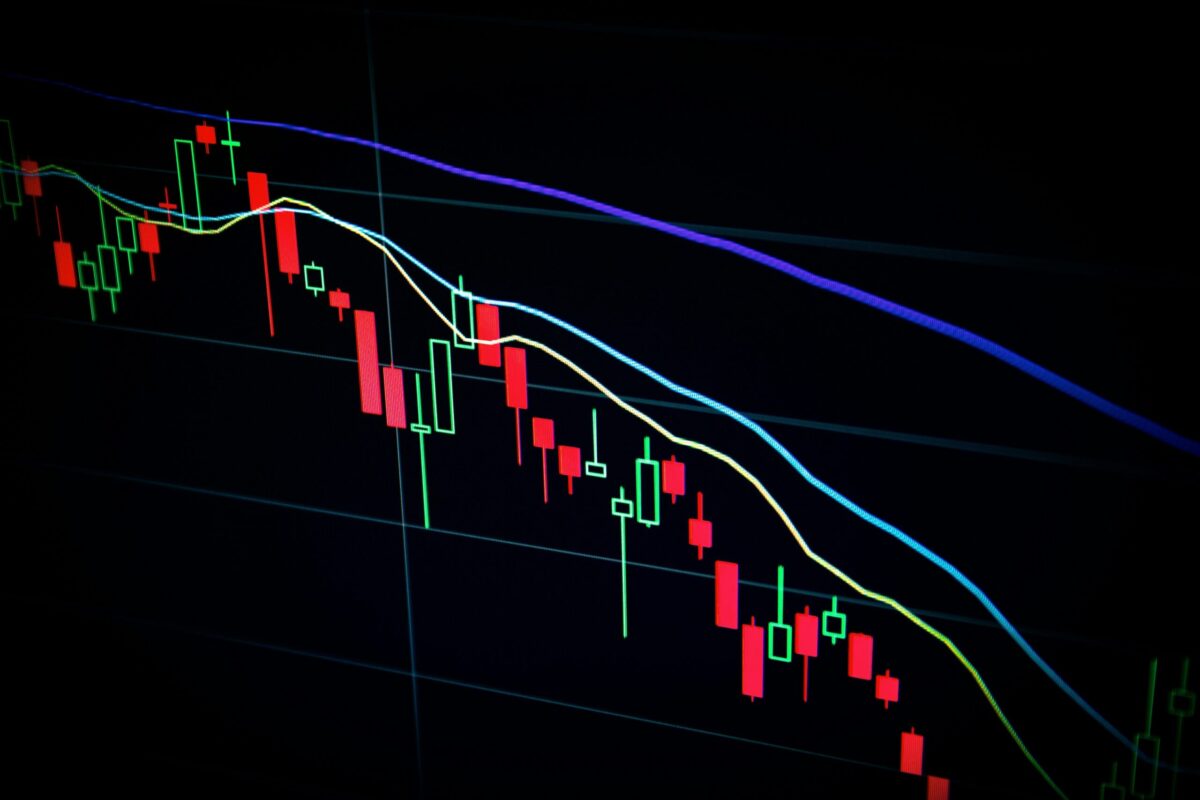Bitcoin ($BTC) experienced a significant drop, falling nearly 6% and briefly losing the $60,000 price level. At the time of writing, it has slightly recovered, trading around $62,400.
Despite this slight rebound, Bitcoin remains down over 3% daily and 5.6% weekly.
This recent dip follows a euphoric surge earlier this year when Bitcoin surpassed $73,000.
The broader cryptocurrency market also saw a decline, with its market capitalisation falling to $2.39 trillion, which is a decrease of 3.3% in the last 24 hours.
This downturn is seemingly driven by mass investor exodus, ETF outflows, Mt. Gox repayment concerns, and market-wide declines, fuelling a bearish sentiment.
What is Bitcoin?
Bitcoin, created in 2008 from a whitepaper by an unknown person or group known as Satoshi Nakamoto, was the first cryptocurrency.
It launched in January 2009 and has consistently remained the largest cryptocurrency by market capitalisation. Currently, Bitcoin has a market capitalisation of $2.39 trillion, making up nearly half of the entire cryptocurrency market.
Bitcoin introduced blockchain technology, enabling direct peer-to-peer transactions online and eliminating the need for financial intermediaries.
This innovation marked the beginning of the cryptocurrency market, providing a decentralised form of money transferable globally without relying on traditional financial institutions.
How does Bitcoin work?
Bitcoin operates on a blockchain, a type of distributed ledger that records transactions across multiple computers. This ledger is secured through advanced encryption techniques.
In the Bitcoin network, transactions are added to a new block, which is then encrypted and verified by network participants, known as miners. Upon successful verification, a new block is created, and the miners are rewarded with newly minted Bitcoins.
The Bitcoin network uses a proof-of-work model, where transactions are queued and validated by miners. These miners use specialised software and hardware to solve a cryptographic puzzle. The first miner to solve the puzzle gets to add the new block to the blockchain and is rewarded with Bitcoin.
Initially, Bitcoin mining was possible on standard personal computers. However, as the network expanded and more miners joined, the process became more complex, requiring more powerful hardware.
BTC’s utility
Initially designed as a peer-to-peer payment system, Bitcoin has been accepted by various merchants and retailers, both online and in physical stores. Major payment providers like PayPal and Stripe have also integrated Bitcoin.
However, Bitcoin has faced criticism for its lack of utility compared to other blockchains and cryptocurrencies, particularly Ethereum ($ETH), which allows for the development of applications and secondary networks on its blockchain.
While some applications have brought decentralised finance (DeFi) use cases to Bitcoin, it lags behind Ethereum, which has a total value locked (TVL) of $26 billion in DeFi, compared to Bitcoin’s $280 million.
Bitcoin price history
Since its launch in 2009, Bitcoin’s price has surged dramatically. CoinMarketCap started tracking Bitcoin in July 2010 at $0.05.
Bitcoin has since gained over 60,000,000%. As the market leader, Bitcoin’s price often reflects the wider industry’s trends.
It saw significant growth in late 2017, reaching a peak of $19,345.49 in December before correcting to around $3,000 by the end of 2018.
The next bull run in 2021 saw Bitcoin surpass $40,000 in January and reach a new high of $61,000 in April. In June, El Salvador made Bitcoin legal tender, further boosting its price.
In January 2024, the approval of spot Bitcoin ETFs by the SEC led to a surge in Bitcoin’s price, breaching $60,000 again and reaching new highs of $69,210 in early March and $75,830 by mid-March.
Anticipation for the Bitcoin halving event on 19 April 2024 also contributed to its price rise and has helped it maintain its position above $60,000 since then.
What’s happening now?
Recently, Bitcoin fell nearly 6%, briefly dropping below $60,000 before stabilising around $62,000.
Over the past weeks, there has been a mass exodus from Bitcoin, with investors spooked by the prolonged price slump.
A recent CoinShares report revealed a $630 million outflow from Bitcoin last week, following a $631 million outflow the week prior. This sell-off also affected other cryptocurrencies like Ethereum.
Bitcoin ETFs saw significant outflows, with major issuers like Fidelity and Grayscale experiencing six consecutive days of withdrawals.
This correction resulted in over $162 million in long BTC positions being liquidated in the last 24 hours.
Bitcoin ETFs shed $1.3B
US spot Bitcoin ETFs are on track for their longest-selling stretch, recording a $174 million outflow on Monday. This was marked as the seventh consecutive day of outflows.
Grayscale’s GBTC saw $90 million in withdrawals, while Fidelity’s FBTC experienced $35 million in outflows.
Other funds, including Franklin Templeton’s EZBC, VanEck’s HODL, Bitwise’s BITB, Ark Invest/21Shares’ ARKB, and Galaxy Digital’s BTCO, also reported significant outflows.
BlackRock’s IBIT and funds from Valkyrie, WisdomTree, and Hashdex recorded zero flows.
Reacting to Mt. Gox concerns
Negative sentiment has also been driven by news that Mt. Gox might sell $8.5 billion worth of Bitcoin to its creditors. Mt. Gox, which lost 850,000 Bitcoin in investor funds in 2014, will start repaying its defunct users in July 2024.
This repayment process has raised concerns about significant selling pressure, contributing to Bitcoin’s recent price decline.
Mt. Gox was once the largest cryptocurrency exchange, handling over 70% of all Bitcoin transactions before going offline in 2014 after a major security breach.
Market commentators have also expressed concerns about significant downward pressure. This comes from the potential Bitcoin sales from the German government and nearly $9 billion in Mt. Gox creditor repayments expected to hit the market in July.
Bitcoin price prediction
The “Fear & Greed Index”, an indicator of market sentiment, has exited the greed territory following the latest crash.
The index, which considers factors like volatility, trading volume, social media sentiment, market cap dominance, and Google Trends, currently stands at 51, down from 55 yesterday.
This is a significant change from the score of 74 last week, which was in the greed zone.
The index fell 21 points on June 24, marking one of the biggest day-to-day drops in recent years, indicating growing fear among investors.
Bitcoin’s recent downturn has resulted in a marked slide in its market dominance, falling by 1.8% to 54.34%, the largest single-day percentage decline since 12 January.
However, some analysts believe the impact of the Mt. Gox repayments, one of the major reasons behind the price slide, may not be as severe as anticipated.
eToro market analyst Farhan Badami suggested that Bitcoin often prices in significant market events in advance.
Badami expects Bitcoin’s price to stabilise in the coming weeks and continue to rally to new all-time highs in the next few months.
What do the charts say?
Technical indicators are currently bearish, as seen on TradingView. The Relative Strength Index (RSI) is below 50, close to the oversold region. However, the indicator was positioned to move upwards at the time of press.
The Moving Average Convergence/Divergence (MACD), on the other hand, also showed a bullish crossover, with red histograms below the zero line.
Volatility is expected to increase, as indicated by the widening Bollinger Bands on the charts.
Key support level to look for was around the $60,000 level, with a potential fall to $58,000 if this level is breached. On the upside, immediate resistance stood at $65,000.
FAQs
Should I invest in Bitcoin?
Investing in Bitcoin depends on your risk tolerance and goals. Bitcoin is highly volatile, offering potential gains and losses. Research thoroughly and only invest what you can afford to lose.
Is Bitcoin a good investment?
Bitcoin’s high volatility means it can offer substantial gains or losses. It’s essential to research, understand the risks, and consider your financial situation. Investors should be cautious and always conduct thorough due diligence.
Disclaimer: The information provided in this article is for informational and educational purposes only and should not be construed as financial advice. CoinNews and its authors are not financial advisors or experts. We recommend that you consult a professional financial advisor or conduct thorough research before making any investment decisions. Cryptocurrency investments carry a high degree of risk, and you should only invest an amount you are willing to lose. The opinions expressed in this article are those of the author and do not necessarily reflect the views of CoinNews or its affiliates.




